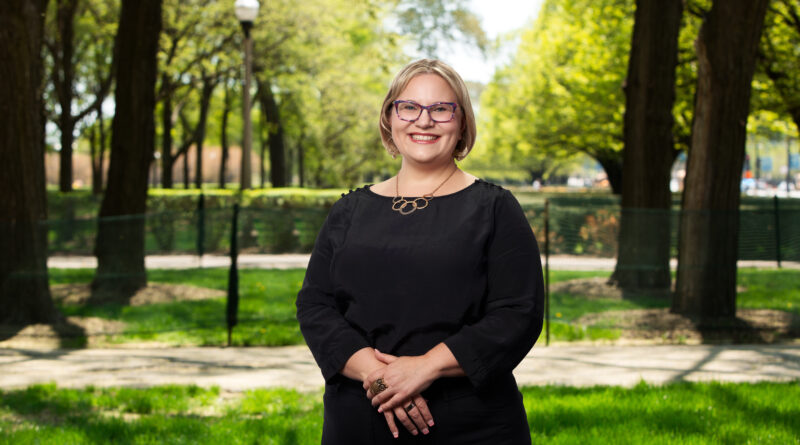A community-first approach to stormwater solutions
In the world of infrastructure, we often follow a predictable pattern: identify a problem, design a solution, seek community input, then build. But what if we’ve been doing this backward? What if the most effective stormwater solutions start not with engineering drawings, but with kitchen table conversations?
As a national leader in community-focused green stormwater infrastructure (GSI) solutions, our work over the last decade has reinforced a fundamental truth: residents aren’t just stakeholders to consult, they’re the primary experts on their own neighborhoods. Their lived experiences provide insights beyond what hydrologic surveys can capture. When we truly partner with communities from day one, we don’t just build better infrastructure, we build lasting solutions that communities champion long after we leave.
From Isolation to Collective Action
In Milwaukee’s Grasslyn Manor neighborhood, residents had suffered flooding in silence for years. Despite widespread basement backups and chronic stormwater issues, the Milwaukee Metropolitan Sewerage District (MMSD) had received only 12 calls from the area over 13 years. The problem wasn’t that the issues didn’t exist, they were just invisible to those with the power to solve them.
Everything changed when Greenprint helped convene the first “Help Build the Ark” resident advisory group meeting. For the first time, neighbors shared their water stories with each other. As voices filled the room recounting flooded basements and years of feeling helpless, something powerful emerged: the realization that they weren’t alone. Individual frustrations transformed into collective understanding and, ultimately, unified action.
Working with this group over 12 sessions, our civil engineers co-created strategies rooted in technical expertise and lived experience. The community conducted their own flood mapping exercise, going door-to-door to collect neighbors’ firsthand accounts. While the topographic data revealed which locations are most vulnerable to flooding, this grassroots approach provided crucial insights into the frequency and lived reality of flood impacts that topographic data alone couldn’t capture.
The results speak for themselves: MMSD is investing in a green schoolyard in Grasslyn Manor, and the City of Milwaukee has invested in two new green alleys, designated Grasslyn Manor as a pilot neighborhood for their Private Property Infiltration & Inflow Reduction Program. And, residents now have a deeper understanding of their water infrastructure and implementation-ready plans for long-term resilience.
Reimagining Resident-City Collaboration
Cities and community groups tend to find themselves at odds over infrastructure projects. But in San Diego, a groundbreaking approach is turning resident leaders and community-based organizations (CBOs) into indispensable allies. The Chollas Blue Green Collaborative (CBGC, or the Collaborative) and the Chollas Blue Green Vision (CBGV, or the Vision) are leading a paradigm shift in urban infrastructure planning.
At the heart of this transformation is the understanding that local leaders are essential partners, not obstacles. The Collaborative, a coalition of nearly 60 diverse entities, including residents, city officials and nonprofits, meets regularly to guide infrastructure investments and ensure projects deliver tangible community benefits like flood mitigation and water quality improvements. This inclusive model transforms potential conflicts into a powerful synergy.
The Vision, co-led by Greenprint Partners, provides the technical backbone. Greenprint’s GIS mapping and spatial analysis capabilities identify high-impact project sites that align with community goals, such as creating new green spaces and cooling urban heat islands. This data-driven approach ensures that every dollar invested maximizes return for the community. Furthermore, the Vision empowers local leaders through training, equipping them with the technical skills needed to advocate effectively. This isn’t just about building infrastructure; it’s about building a more resilient, cohesive community. The Collaborative and the Vision are charting a new course for American infrastructure, one where technical expertise and community wisdom converge for a better future.
The Infrastructure Imperative
These are not just feel-good stories, they are infrastructure imperatives. In an era of aging systems, climate uncertainty and public skepticism, we cannot afford to build infrastructure that communities don’t understand, support or maintain.
Community-first approaches produce better outcomes, are more cost-effective and create the social infrastructure necessary for long-term resilience. When residents become co-creators rather than consultees, they don’t just accept projects, they champion them.
The path forward requires a fundamental shift: from consulting communities to empowering them, from extracting input to building partnerships and from delivering solutions to co-creating them. The water sector has always understood that infrastructure systems work best when they’re connected. It’s time we applied that same thinking to the human systems that make infrastructure possible.
By April Mendez. She is the CEO of Greenprint Partners. She may be reached at amendez@greenprintpartners.com.


